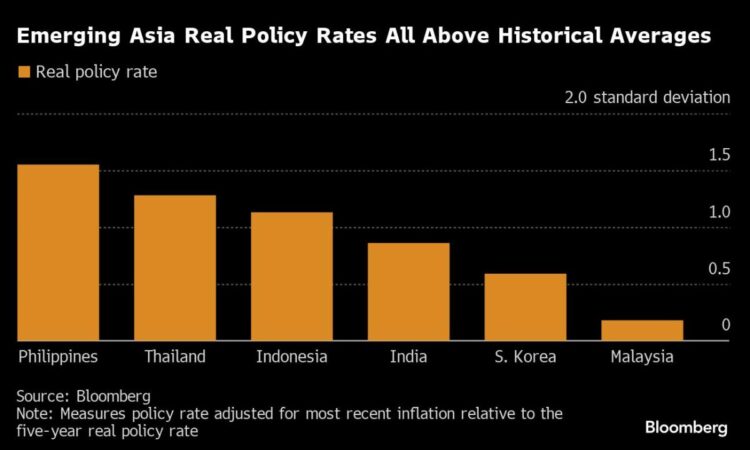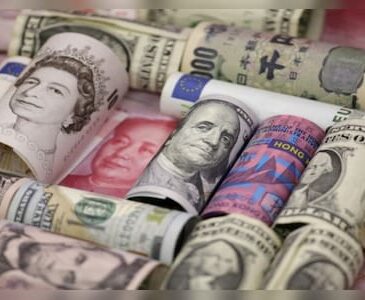
(Bloomberg) — Sovereign bonds in emerging Asia will benefit more from rate-cut expectations than currency gains this year.
Most Read from Bloomberg
A dovish Fed would make space for Asian central banks to trim interest rates faster, boosting bonds. However, dollar losses aren’t a given due to the US economy’s resilience, which means it’s uncertain whether local currencies would strengthen enough to support bonds.
“Duration is likely to outperform with the turning of the global interest rate and inflation cycles,” said Alvin Tan, head of Asia FX strategy at RBC Capital Markets in Singapore. In comparison, many EM currencies may see either limited gains or losses in the first half, as the broad dollar will remain largely resilient and range-bound, he said.
Asian currencies are already off to a bad start in 2024 as they fell the most in over nine months on the first trading session of the new year as tensions in the Middle East and Europe deterred risk-taking. The dollar on the other hand posted its biggest gain since October.
History also suggests currency performance tends to lag in the run-up to Federal Reserve easing. While the Fed was on pause from the end of 2018 up until late July 2019, the Bloomberg EM Asia bond index recorded a total return of around 4.90%. Gains in bond prices and income from coupons contributed 5.30% but on the currency side, there was a loss of 0.4%.
“The Fed’s shift opens up more room for Asian central banks to ease policy and is, therefore, more supportive of broader duration,” Goldman Sachs analysts including Kamakshya Trivedi wrote in a note in December. The global disinflation trend will allow other central banks to respond more aggressively to falling inflation, which would “allow EM duration to outperform currency returns.”
The disinflation narrative has taken hold in emerging Asia. In November, six out of eight emerging Asian nations saw inflation undershoot economist estimates, with price growth lagging forecasts by the most since March.
READ: Goldman Sees India to Australia Easing Policy Earlier After Fed
Real Rates
Meanwhile, real policy rates in the region are above historical averages — signaling that authorities have room to cut rates. For example, Bangko Sentral ng Pilipinas’ benchmark rate after adjusting for most recent inflation stands at 2.4% — which is 1.5 standard deviations above the five-year average. This same gauge for Thailand and Indonesia is also around one standard deviation higher. The Philippines will release December inflation figures on Friday.
“Global core yields continue to soften and, alongside retracement in oil prices, shape an encouraging set-up for EM Asia duration too,” Citigroup Inc. strategists including Gaurag Garg wrote in a note in December.
(Updates with upcoming Philippine inflation data in paragraph eight.)
Most Read from Bloomberg Businessweek
©2024 Bloomberg L.P.


